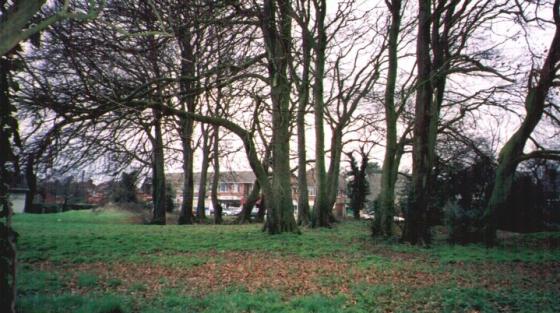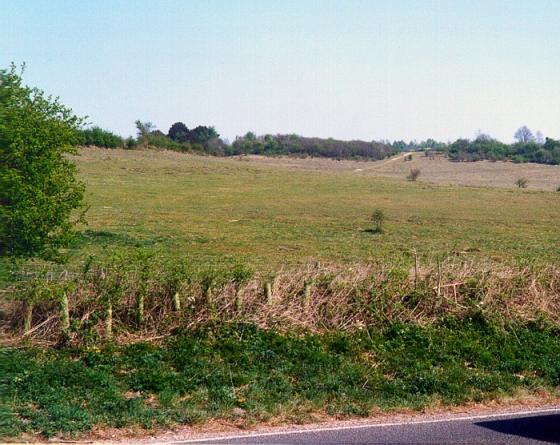Visited 23.11.12
A weekend away in Winchester and a chance to knock another couple of E.H. sites off the list.
First ‘port of call’ is this lovely little Barrow Cemetery.
As is often the case with these smaller sites, there are no E.H. signs to help show the way for the unsuspecting traveller – luckily I have my trusty O/S map!
Actually, the site is easy enough to find being near the crossroads in the centre of the field. The closest we could find to park was in Chestnut Avenue (private road!) a two minute walk away.
There is an E.H. information board (even if the details are incorrect) which has a section in Braille which is a nice touch (excuse the pun)
Despite the wet grass it was a lovely blue sky day and as expected, I had the site to myself with just the sound of birdsong for company.
As you go through the gate the large sarsen stone is on your left and a large tree trunk on your right. It feels a bit like going through an ‘entrance’ into the cemetery – although obviously it isn’t really! The sarsen stone is nice and smooth, with white and green lichen growing on its northern side. The tree has been cut right back and is now not much more than a large trunk.
The Bowl Barrow has clearly been dug into and is about 1m high x 15m across
The Disc Barrow is superb – easily the best I have ever seen.
It is about 40m across and the bank is surviving to a height of about 1m.
This is an excellent place to visit and I would highly recommend it when in the area.
***
My mum passed away two weeks ago after a long battle against cancer which saw her slowly waste away in front of our eyes. My sisters and I cared for her at home for most of the year and myself and Dafydd were with her when she died. I know she would have liked to have known Dafydd was in the room as he has always been the ‘chosen one’ who could do no wrong! Dafydd knows his Nan is now a star who will watch over him and keep him safe. (I am having difficulty writing this but I think it is therapeutic?)
The funeral was yesterday and this trip away was planned/booked several months ago. I do not know if the timing has turned out to be a good or bad thing.
It certainly does make you think much more about the ‘rituals’ which would have taken place when loved ones were laid to rest.
This fieldnote is dedicated to my mum who although never seeing the attraction in ‘old stones’ always encouraged me to get out and ‘see the world’.
R.I.P. mam.


























































